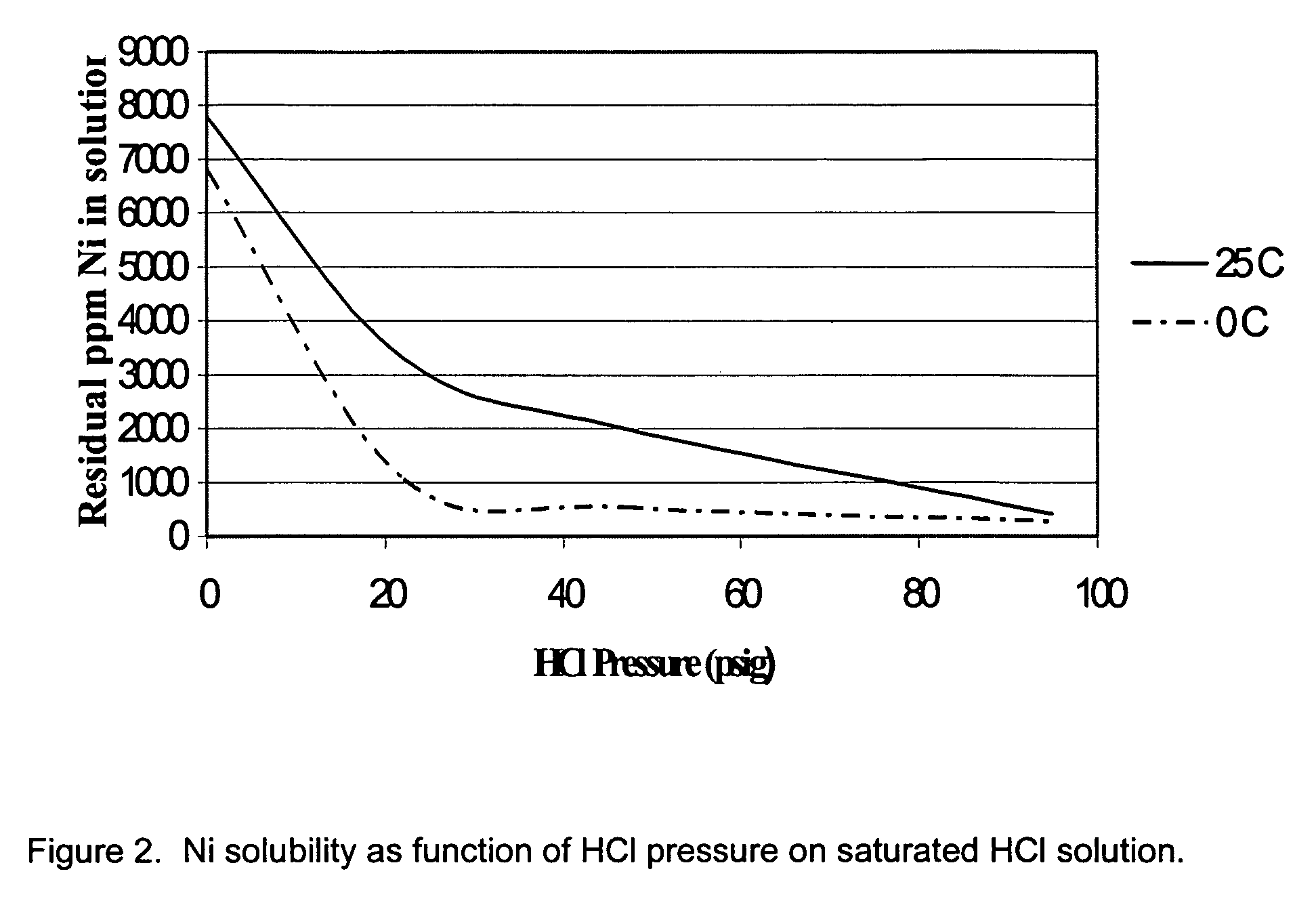Process for the extraction of specific transition metals with gaseous HCL
a technology of transition metals and gaseous hcl, which is applied in the field of metal recovery processes, can solve the problems of low product purity, poor recovery rate, and high cost of chemical reagents, and achieve high separation rate of ste's, and high purity
- Summary
- Abstract
- Description
- Claims
- Application Information
AI Technical Summary
Benefits of technology
Problems solved by technology
Method used
Image
Examples
Embodiment Construction
[0027]The processes described are directed to recovery of specific transition elements [STE's] defined herein as comprised of vanadium [V], iron [Fe], cobalt [Co], nickel [Ni], molybdenum [Mo] and tungsten [W] quantitatively and with a high degree of purity from chemically complex materials. Recovery of STE's is highly desirable due to the value of the contained STE's or potential environmental risk associated with disposal. The process described provides advantage in simplicity, adaptability to chemically diverse materials, high rate of STE recovery, high purity single-element STE products and low net consumption of simple chemicals during material processing. Waste products are minimized because of extensive recycling and limited reliance on aqueous-based processes.
[0028]The overall process for recovery of all STE's, as described in detail below, comprises three interrelated processes: (1) quantitative oxidation of STE's by O2 to oxides in which the STE's are near or in their high...
PUM
| Property | Measurement | Unit |
|---|---|---|
| temperatures | aaaaa | aaaaa |
| temperature | aaaaa | aaaaa |
| temperature | aaaaa | aaaaa |
Abstract
Description
Claims
Application Information
 Login to View More
Login to View More - R&D
- Intellectual Property
- Life Sciences
- Materials
- Tech Scout
- Unparalleled Data Quality
- Higher Quality Content
- 60% Fewer Hallucinations
Browse by: Latest US Patents, China's latest patents, Technical Efficacy Thesaurus, Application Domain, Technology Topic, Popular Technical Reports.
© 2025 PatSnap. All rights reserved.Legal|Privacy policy|Modern Slavery Act Transparency Statement|Sitemap|About US| Contact US: help@patsnap.com



